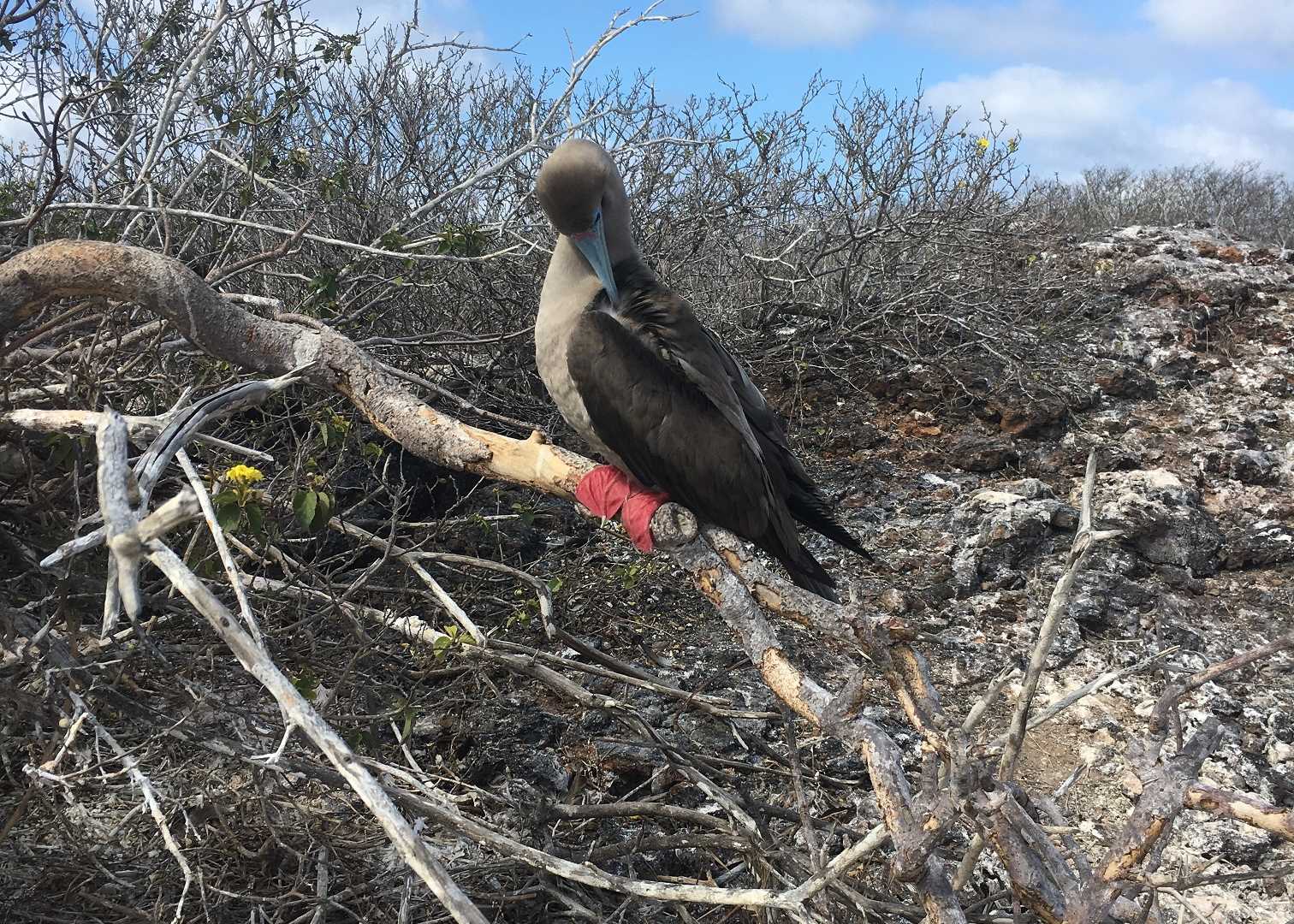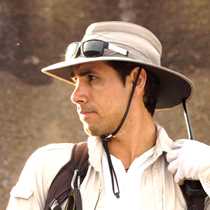With the first light of the day, the National Geographic Endeavour entered the collapsed caldera of Genovesa Island. Some of our guests were up on deck watching what it seemed to be swarms of flying insects, but they turned out to be thousands of seabirds of different kinds. Genovesa is the northeastern-most island in the Galapagos, and most spectacular when it comes to birds, known among naturalists as the “bird paradise”.
The morning activities began right after breakfast with a special outing for the keen photographers, who departed earlier to Darwin Bay located on the north-eastern side of the caldera. They had an excellent opportunity to take their time during the walk, stopping to adjust the camera settings and take advantage of the great morning light, and of course photograph the most fearless birds in this part of the world.
The second option was to visit Prince Philip’s steps, located on the southwestern part of the caldera, which consists of a dry landing over lava rocks and a 90 foot climb to the top of the cliff. As we made our ascent, we observe some of the first nesting sites of the Nazca Boobies, which appeared to be unaware of our presence here as we walked right past them. We also observed Darwin finches and Galapagos mockingbirds. As we entered the dry forest dominated by palo santo trees, some of our guests spotted some birds nesting in the trees, and we realized that they were red-footed boobies, with white and brown plumage. We made it to the other side of the point and started our search for the elusive short-eared owl. We looked near the crevices and lava tubes, and finally one of our guests spotted one at the distance, perfectly camouflaged and waiting patiently for storm petrels to land—their first meal of the day. The Genovesa short-eared owl is the only one in the Galapagos which has developed diurnal feeding habits, since their main prey, the storm petrel, happens to be most active during the day.
After the morning hike, we offered deep water snorkeling along the walls of the caldera and kayaking to observe wildlife in a similar location. A great snorkeling outing with the Galapagos fur seals and many tropical fish is the perfect ending of the first part of the day.
After lunch, we prepared ourselves for a wet landing on a beautiful white sand beach known as Darwin bay. We began our walk along the intertidal zone and some of the first creatures we saw were sea lion pups. Some of them must have been just a few weeks old. They were guarded by their mothers, and at the distant the alpha male patrolled the beach.
We were able to get great photographs of the red-footed boobies, great frigatebirds and swallow-tailed gulls, mostly clustered in the same location. The lighting was second to none for photography, and what an incredible landscape—the best way to end our trip in the Galapagos Islands.







